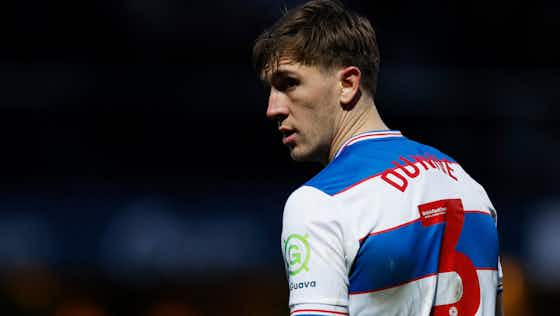Football League World
·6 March 2024
QPR emulating Newcastle as Cifuentes makes top class tactical tweak: View

In partnership with
Yahoo sportsFootball League World
·6 March 2024

Marti Cifuentes has improved Queens Park Rangers in many different ways, but it is their defence which has been the most solid since his appointment.
Since his appointment late in October, following a poor start to the season under Gareth Ainsworth when they looked one of the favourites for relegation, Cifuentes' side have 11th most points in the league, having secured eight wins and six draws in 21 games.
Under Cifuentes, QPR have improved in many areas and look like a side improving rapidly, despite a small dip in form during late December and early January, but is is the defence that has showed the most signs of improvement.
Earlier in the campaign, Ainsworth opted for a 3-4-2-1 or 3-4-1-2 system for the most part, which saw Paul Smyth deployed as right-sided wing-back, but since Cifuentes' switch to a back four, he has chopped and changed to find the right balance on the right-hand side.
Reggie Cannon and Osman Kakay have played plenty of games in that role, but in the last three fixtures, Cifuentes seems to have found his solution for that role, with Jimmy Dunne operating as the right-back.

Kakay and Cannon are much more likely to bomb forward, but Dunne adds the physicality and size needed to be a defence-first right-back, which also gives Kenneth Paal more freedom, as very much an attack-minded left-back or out-and-out left wing-back for most of his career as a player.
There are plenty of sides who deploy a situational back three in the English leagues when in possession, where one of the full-backs will invert and tuck inside to form a centre-back trio, but perhaps none more famously so than Newcastle United.
To particularly good effect last season, they deployed Dan Burn as a left-back, despite being a centre-back by trade, allowing the opposite full-back, Kieran Trippier, to get forward to combine further up the pitch.
Trippier has bagged plenty of assists and created multiple chances down Newcastle's right flank for a few years now, and although Paal is not necessarily of exactly the same profile, he does like to dominate the flank with his pace and directness.
Dunne perhaps profiles far more directly to Burn, with neither particularly mobile, but doing a very good job when asked to become an auxiliary central defender on the right side, with Jake Clarke-Salter and Steve Cook shifting across slightly to allow Paal that freedom, but the shape will switch to a four when defending out of possession.
There is plenty to be said of having a settled back four and a strong defensive base who get increasingly used to one another and build connections with each other, and QPR have conceded just 20 goals in 21 games, which is always likely to give them a chance of survival.
They have also won the last three fixtures, including a fantastic 2-1 win over league-leaders Leicester at the weekend, conceding just two goals in those three games in the process.

That defensive improvement since Cifuentes' appointment also shows up in the data, but particularly since finding the balance of his full-backs. His side have the 11th best expected goals against figure with 41.8, per FBref, and have been somewhat unlucky to have under performed and conceded 46 goals from that.
Albeit, that is the ninth-best defensive record in the division, it gives them that settled base which also allows the attacking players more freedom to express themselves, and the presence of stars such as Chris Willock and Ilias Chair, married with Cifuentes' defensive structure, has certainly given them a stronger chance of staying up now.
In the three games recently since Dunne's move to right-back, they have conceded 2.5xG, but from 43 shots, which is 0.06xG per shot, highlighting their ability to restrict teams to low quality chances around the edge of the box, and keeping them at arm's length in the process.
The Rs are more competitive in games, and stronger both in terms of their defensive structure out of possession and in how frequently they create chances by getting both of their key players on the pitch at the same time more often as well.






























































